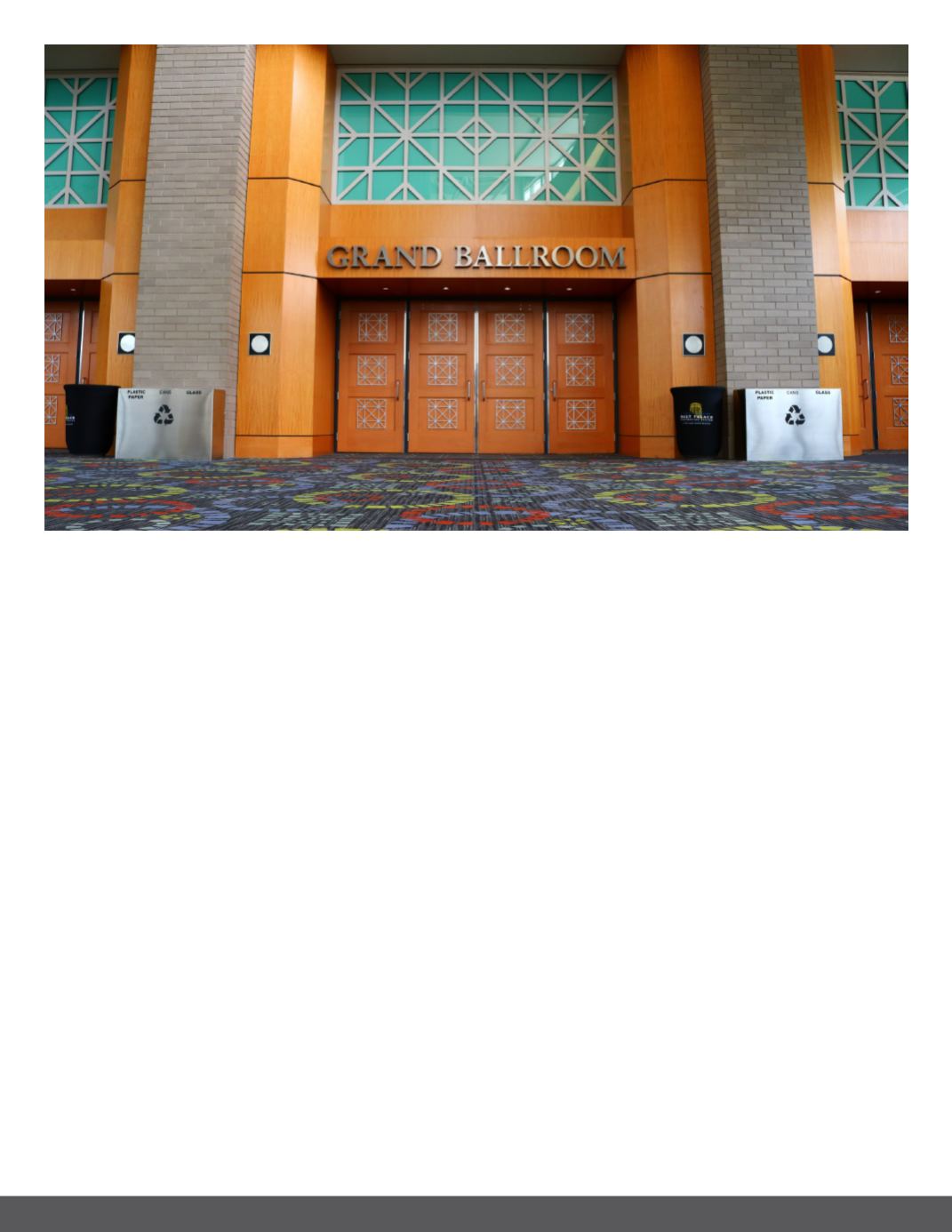
Business View Magazine - October 2016 165
schools receive foam core signs; bags and lanyards
go to a summer camp for kids with cancer; Habitat
for Humanity receives carpet and building materials;
lost and found items go to a thrift store or to home-
less shelters. It’s an incredibly successful program. We
launched it about two and a half years ago, and we’ve
donated thousands of bags and thousands of feet of
foam core.”
The Center has also addressed the greening of its in-
frastructure. “Ten years ago, we converted all of our
exhibit hall lighting to fluorescent, which was a dramat-
ic savings,” Hayes says. “Now, with the advent of LED,
we’re converting spaces, yearly, over to LED lighting
throughout our venue. Other things we do: our land-
scape system uses drip irrigation to save about 50 per-
cent in terms of landscape water. We have about 50
percent of our venue, right now, equipped with water-
less urinals, and we’re looking to add another 65 wa-
terless urinals next year and that will get us to about
a 75 percent conversion in the venue. Each urinal is
expected to offset about 40,000 gallons of water per
year. So, we take all of those things exceptionally seri-
ously.”
Another sustainable practice has allowed the Center
to minimize its paper use. “The biggest thing we’ve
done there is for our event management team, the
folks who write the BEOs (Banquet Event Orders) or
the set-up sheets for each event,” Hayes declares. “In
years past, we often had BEOs that were 120 pages
long; we were printing reams and reams of paper to
communicate to staff. About 18 months ago, we con-
verted that whole program over to a software program,
which is, essentially, a web-based spreadsheet, to
communicate all of our set-up needs. We equipped all
of our managers and supervisors with tablets so they
can capture that event need and those event orders.
And it has just saved forests of trees. We always look
to be early adopters of technology where it can save
us money and also save on tolls to the environment.”


